
Roots
The rhythm of life pulses through us, unseen yet undeniably powerful, orchestrating everything from the quiet beat of our hearts to the delicate growth of each hair strand. When the natural cadence of our days and nights falls out of sync, particularly through the quiet erosion of restorative sleep, a subtle disquiet settles within. This disruption, often dismissed as mere tiredness, initiates a cascade of biological shifts that can whisper tales of imbalance directly to our scalp.
Our hair, far from being a mere aesthetic adornment, serves as a sensitive barometer of our inner physiological landscape, reflecting the hidden currents of our well-being. To truly understand the hormonal effects of insufficient sleep on scalp vitality, we must first descend into the foundational mechanisms that govern both our slumber and the intricate life cycle of our hair.

The Scalp’s Biological Clock
Our bodies operate on a remarkable internal timepiece, the Circadian Rhythm, which choreographs a symphony of physiological processes over approximately twenty-four hours. This rhythm, deeply intertwined with the alternation of light and dark, guides everything from our sleep-wake cycles to cellular repair and hormone secretion. The scalp, with its dynamic hair follicles, possesses its own localized circadian clock, a mini-orchestra playing in concert with the body’s central conductor.
This localized rhythm dictates when hair follicles are most active, when they rest, and when they prepare for renewal. When the overarching rhythm of sleep is disrupted, the delicate timing within the scalp’s cellular world begins to falter, impacting the very environment where hair finds its life.
The scalp, a dynamic environment, possesses its own intricate biological clock, synchronizing hair growth with the body’s overarching circadian rhythm.

What Hormones Shape Our Hair’s Destiny?
A complex interplay of hormones governs the life cycle of each hair strand, from its nascent beginnings to its eventual release. These chemical messengers, circulating throughout our system, act as vital signals for hair follicle activity. Among the most prominent are:
- Cortisol ❉ Often referred to as the body’s stress hormone, cortisol is naturally higher in the mornings, aiding in alertness, and declines as the day progresses, preparing us for rest. However, chronic stress and inadequate sleep can lead to persistently elevated levels, a state far from its intended purpose.
- Melatonin ❉ Widely known as the sleep-inducing hormone, melatonin is produced primarily in darkness and signals to the body that it is time to rest. Beyond its sleep-regulating role, melatonin also exhibits antioxidant properties and directly influences hair follicle activity.
- Growth Hormone ❉ Secreted predominantly during deep sleep, growth hormone is essential for cellular repair and regeneration throughout the body, including the hair follicles.
- Thyroid Hormones ❉ These hormones, including thyroxine (T4) and triiodothyronine (T3), are crucial regulators of metabolism and significantly influence the hair growth cycle. Both insufficient and excessive levels can lead to hair concerns.
- Sex Hormones ❉ Estrogen and testosterone also play roles in hair health. Estrogen tends to prolong the hair’s growth phase, while an imbalance in androgens can affect hair follicles on the scalp.
Each of these hormonal players contributes to the scalp’s overall vitality, influencing everything from the rate of hair growth to the strength of individual strands and the scalp’s general resilience.
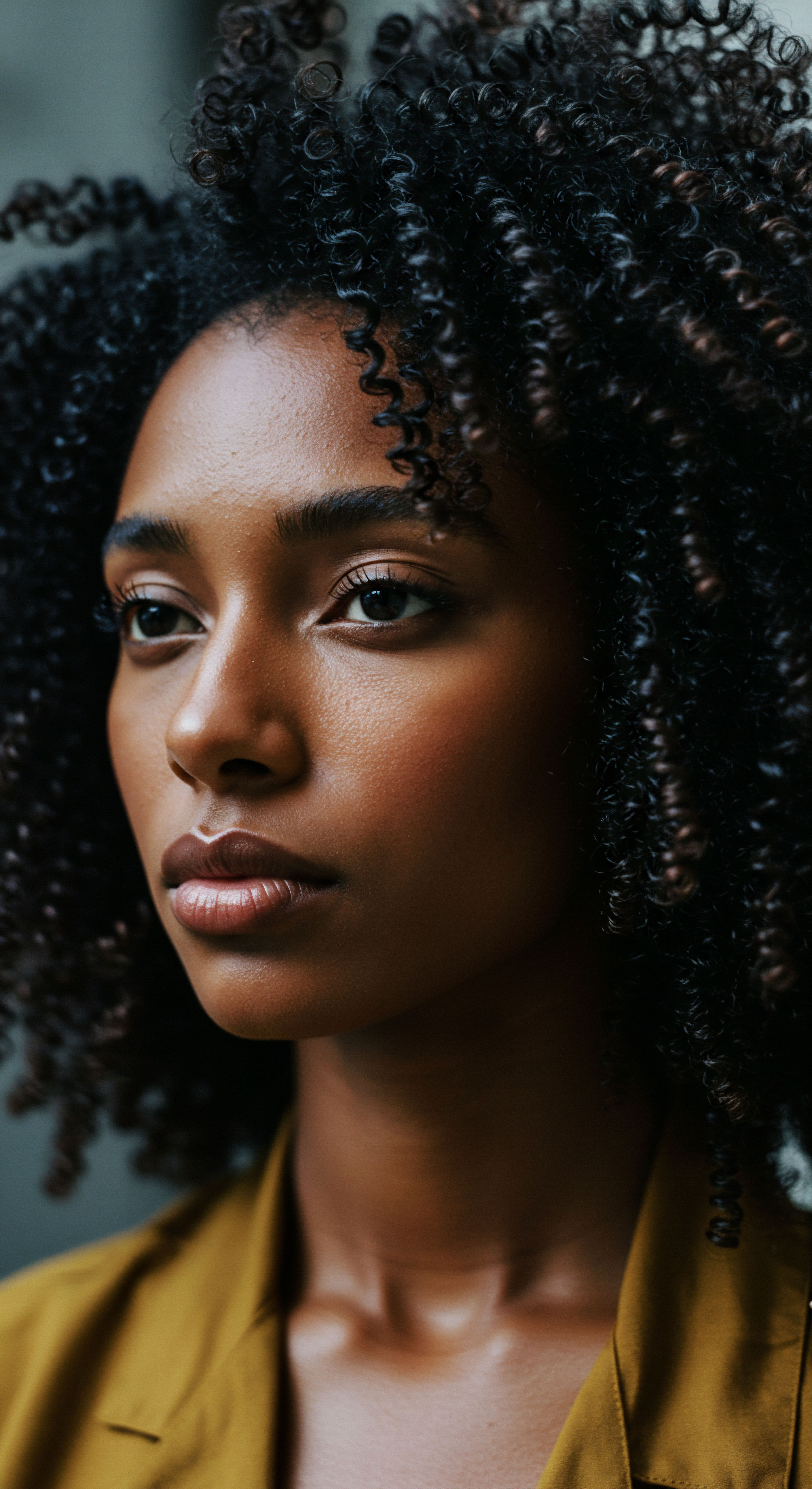
Hair Growth Cycle Fundamentals
Hair growth is a continuous, cyclical process, not a static state. Each hair follicle moves through distinct phases:
- Anagen Phase ❉ This is the active growth phase, where hair cells rapidly divide, and the hair shaft extends. The majority of our hair is in this phase at any given time.
- Catagen Phase ❉ A brief transitional phase where hair growth slows, and the follicle begins to shrink.
- Telogen Phase ❉ The resting phase, during which hair stops growing and remains in the follicle before eventually shedding to make way for new growth.
- Exogen Phase ❉ The final phase where the hair actively sheds.
The harmonious progression through these phases is paramount for maintaining hair density and health. Hormonal signals act as conductors for this cycle, ensuring a balanced transition. Any prolonged disruption to these signals, as can occur with insufficient sleep, risks pushing more hair follicles into the resting or shedding phases prematurely, altering the natural rhythm of scalp vitality.
| Phase Anagen |
| Description Active growth, rapid cell division, hair extends. |
| Hormonal Influence Stimulated by Growth Hormone, Estrogen, Melatonin. Inhibited by high Cortisol. |
| Phase Catagen |
| Description Brief transition, growth slows, follicle shrinks. |
| Hormonal Influence Shift influenced by hormonal changes. |
| Phase Telogen |
| Description Resting phase, hair remains in follicle, no growth. |
| Hormonal Influence Increased by high Cortisol, disrupted circadian rhythm. |
| Phase Exogen |
| Description Active shedding of hair. |
| Hormonal Influence Result of prolonged Telogen phase. |

Ritual
As we move from the foundational understanding of hair’s inner workings, a natural curiosity arises regarding the daily practices and rhythms that can either bolster or betray our scalp’s vitality. The practical wisdom we seek often lies in the seemingly simple yet profound choices we make, particularly those surrounding our sleep. A good night’s rest is more than a mere pause; it is a dedicated period of restoration, a silent ritual that shapes our hair’s future. When this nightly ceremony is interrupted, the delicate hormonal balance that underpins scalp health begins to waver, leaving its subtle, yet undeniable, mark.
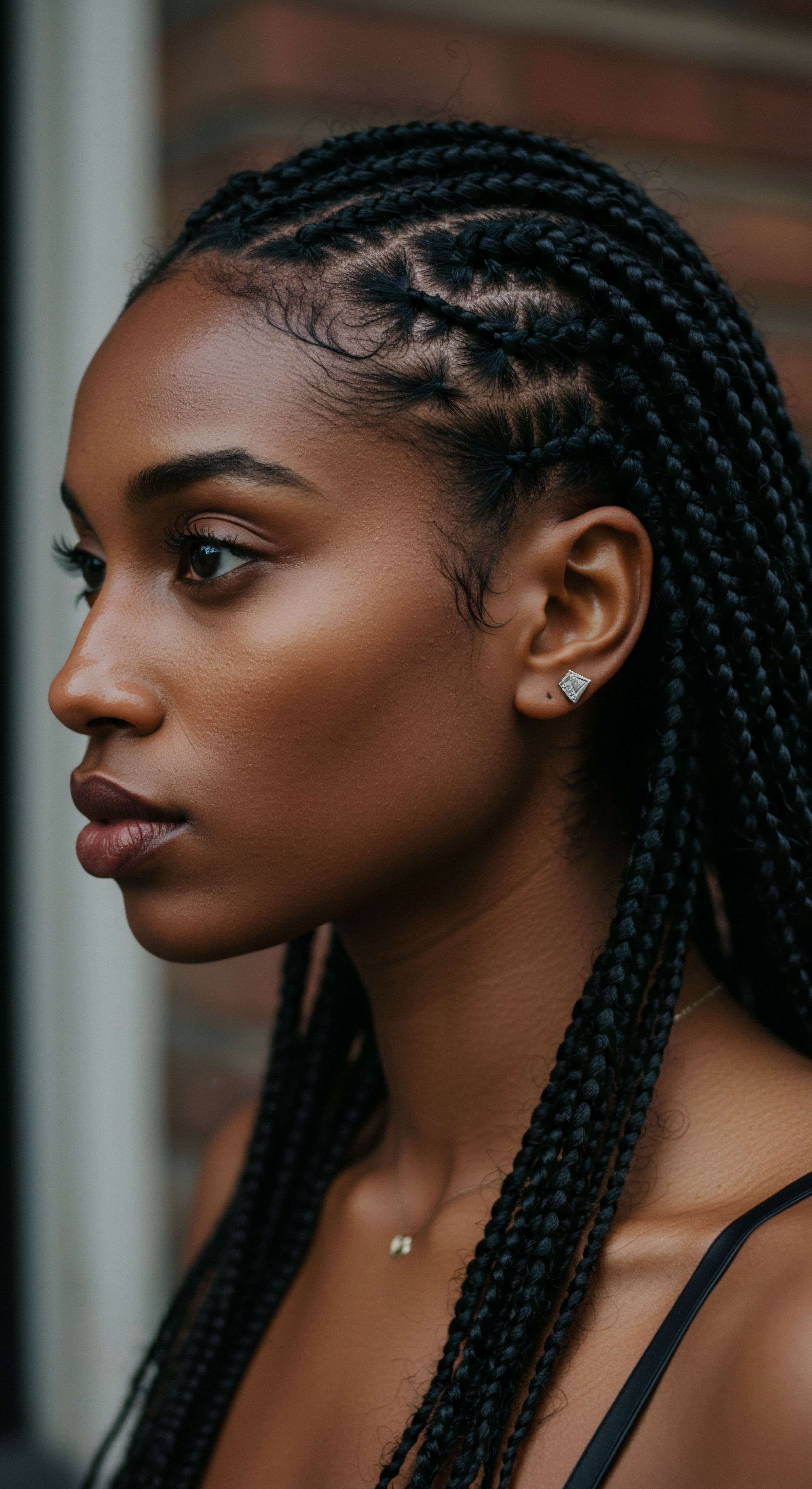
How Insufficient Sleep Alters Hormonal Balance
The connection between sleep and our hormonal landscape is deeply reciprocal. When the body is deprived of adequate rest, it perceives this as a form of stress, triggering a cascade of responses designed for survival, not for lush hair. This response is orchestrated primarily through the endocrine system, a network of glands that produce and release hormones.

Cortisol’s Elevated Dance
Perhaps the most immediate and impactful hormonal shift observed with insufficient sleep is the elevation of Cortisol. This steroid hormone, released by the adrenal glands, is a crucial component of our stress response. While a natural surge in cortisol in the morning helps us awaken, chronic sleep deprivation leads to sustained high levels, even at night. This prolonged elevation of cortisol directly interferes with the hair growth cycle, often prematurely pushing hair follicles from their active growth (anagen) phase into the resting (telogen) phase.
This phenomenon, known as Telogen Effluvium, can result in noticeable shedding and a general thinning of hair. The impact extends beyond shedding; elevated cortisol can also contribute to inflammation within the body, including the scalp, which further compromises hair follicle health and can worsen existing scalp conditions.
Inadequate rest elevates cortisol, a stress hormone that can prematurely push hair follicles into a resting phase, leading to increased shedding.

Melatonin’s Diminished Presence
Melatonin, the hormone of twilight and deep slumber, is intricately linked to our sleep-wake cycle and produced in response to darkness. Its levels naturally rise in the evening, signaling the body to prepare for rest. When sleep is insufficient or disrupted, melatonin production can be curtailed. Beyond its sleep-regulating properties, melatonin acts as a potent antioxidant, protecting hair follicles from oxidative stress, a process that can damage cells and accelerate aging.
Furthermore, melatonin has been shown to directly stimulate hair growth by lengthening the anagen phase. A diminished presence of this vital hormone, therefore, can compromise both the protective mechanisms of the scalp and the active growth of hair.

Growth Hormone and Cellular Renewal
The hours of deep, restorative sleep are a period of profound physical restoration. During these vital stages, the body releases Growth Hormone, a powerful orchestrator of cellular repair and regeneration. This hormone plays a critical role in the proliferation of cells, including those within the hair follicles that are responsible for creating new hair strands. When sleep is consistently shortened or fragmented, the secretion of growth hormone is significantly reduced.
This reduction can directly translate to slower hair growth, weaker strands, and a compromised ability of the scalp to repair itself from daily environmental stressors. The impact is not merely cosmetic; it reflects a systemic slowdown in the body’s regenerative capabilities.
| Hormone Cortisol |
| Shift Due to Sleep Deprivation Increased levels, especially at night. |
| Consequence for Scalp/Hair Prematurely enters hair follicles into resting phase, leading to shedding (telogen effluvium); increases scalp inflammation. |
| Hormone Melatonin |
| Shift Due to Sleep Deprivation Decreased production. |
| Consequence for Scalp/Hair Reduced antioxidant protection for follicles; shorter active growth phase; compromised hair growth. |
| Hormone Growth Hormone |
| Shift Due to Sleep Deprivation Reduced secretion during deep sleep. |
| Consequence for Scalp/Hair Slower hair growth; weaker strands; impaired cellular repair in scalp. |
| Hormone Thyroid Hormones |
| Shift Due to Sleep Deprivation Potential disruption to balance. |
| Consequence for Scalp/Hair Can lead to diffuse hair loss or thinning if levels are imbalanced. |

Other Hormonal Interferences and Scalp Health
While cortisol, melatonin, and growth hormone are primary players, other hormonal systems can also be subtly nudged off course by insufficient sleep, impacting scalp vitality.
- Thyroid Hormones ❉ The thyroid gland, a metabolic maestro, produces hormones that regulate nearly every bodily function, including hair growth. Sleep disruption can affect the delicate balance of thyroid hormones, potentially contributing to diffuse hair thinning or changes in hair texture. An underactive thyroid, for example, can manifest as dry, brittle hair and hair loss.
- Sex Hormones ❉ Estrogen and testosterone, while not as directly linked to acute sleep deprivation hair loss as cortisol, are still part of the broader hormonal symphony. Poor sleep can influence their balance, and an imbalance in these hormones can affect hair growth patterns and density. For instance, imbalances in androgens can lead to hair thinning on the scalp in genetically predisposed individuals.
- Oxidative Stress ❉ Beyond specific hormones, sleep deprivation contributes to an increase in reactive oxygen species (ROS), leading to oxidative stress. This cellular imbalance can damage hair follicles and the scalp’s protective barrier, potentially contributing to premature graying and various scalp conditions like seborrheic dermatitis. Oxidative stress can also compromise the anchoring force of the hair strand within the follicle, leading to increased shedding.
The nuanced relationship between sleep and these hormonal systems underscores the holistic nature of scalp vitality. Each element is connected, and a disruption in one area can reverberate throughout the entire system, affecting the very essence of our hair’s health.
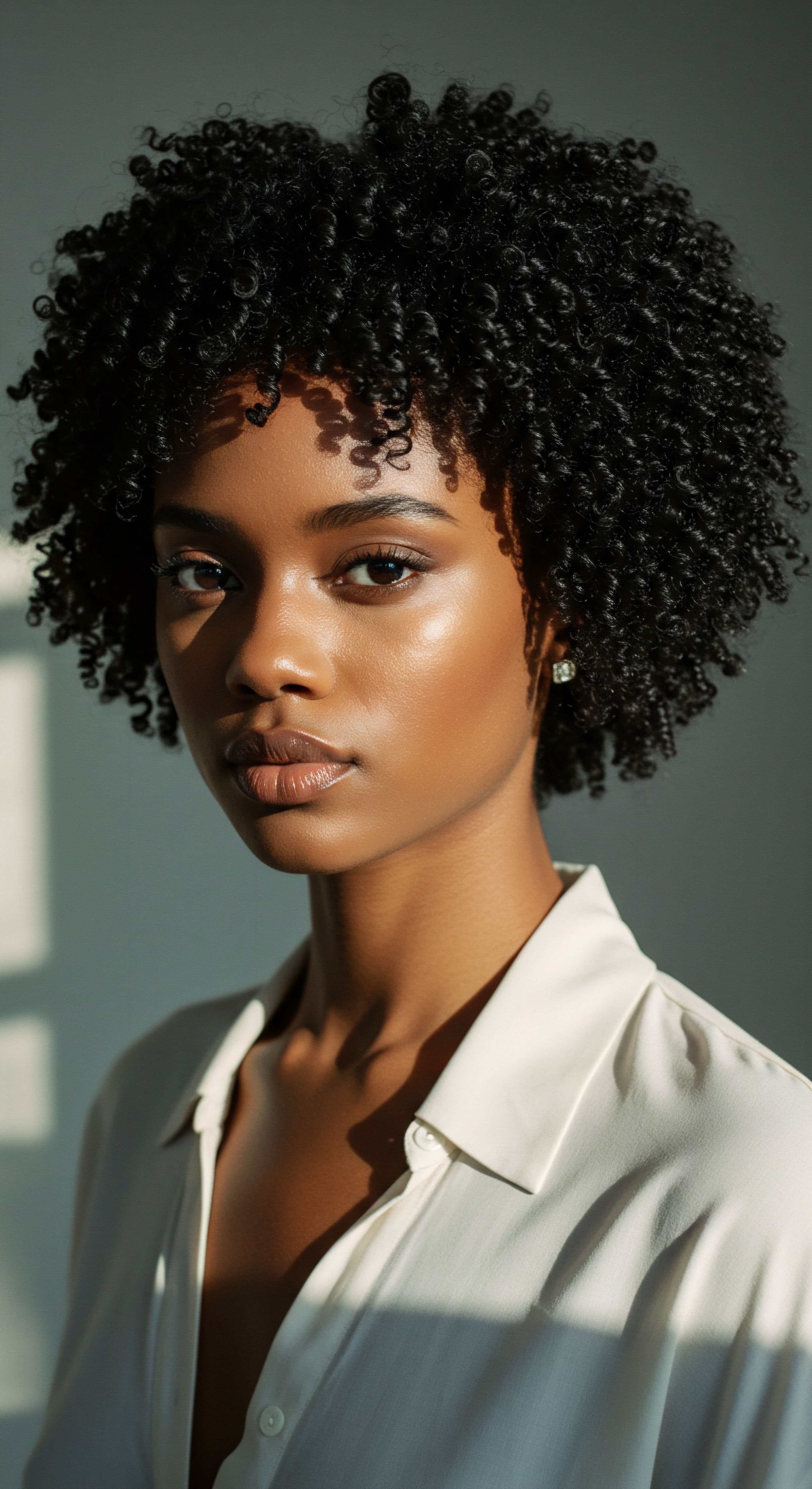
Relay
Moving beyond the readily apparent, we arrive at a more profound consideration of sleep’s reach into the deepest biological mechanisms governing scalp vitality. This domain reveals a complex interplay where cellular communication, genetic expression, and even the microenvironment of the hair follicle itself become participants in a delicate dance, often disrupted by the modern scourge of insufficient rest. Here, we delve into the less obvious, yet equally compelling, connections that paint a fuller picture of sleep deprivation’s subtle, enduring impact.

How Does Sleep Deprivation Affect Hair Follicle Stem Cell Quiescence?
The very ability of hair to regenerate throughout life stems from specialized Hair Follicle Stem Cells, residing within the hair follicle. These remarkable cells possess the capacity to self-renew and to differentiate into the various cell types required for hair shaft production. Their activity is meticulously regulated, often remaining in a quiescent, or dormant, state until signaled to initiate a new growth cycle. Research suggests that the body’s internal clocks, including the circadian rhythm, exert a significant influence on the activity of these stem cells.
A particularly compelling study, published in Nature in 2021, illuminated a direct mechanistic link between stress hormones and hair follicle stem cell quiescence. This research, primarily conducted in mice, identified that Corticosterone (the rodent equivalent of human cortisol) actively inhibits a molecule called GAS6, which is crucial for activating hair follicle stem cells. When mice were subjected to chronic stress, leading to elevated corticosterone levels, their hair growth was significantly reduced. Conversely, when the adrenal glands (which produce corticosterone) were removed, or when GAS6 was administered, hair regrowth cycles accelerated.
This finding suggests that chronic sleep deprivation, by consistently elevating cortisol levels in humans, could be actively keeping hair follicle stem cells in a prolonged state of quiescence. This means that even if a hair sheds, the signals for a new hair to begin growing are suppressed, leading to overall thinning and reduced hair density over time. It presents a nuanced understanding ❉ the problem is not only increased shedding but also a compromised capacity for regrowth, a subtle yet significant long-term effect.
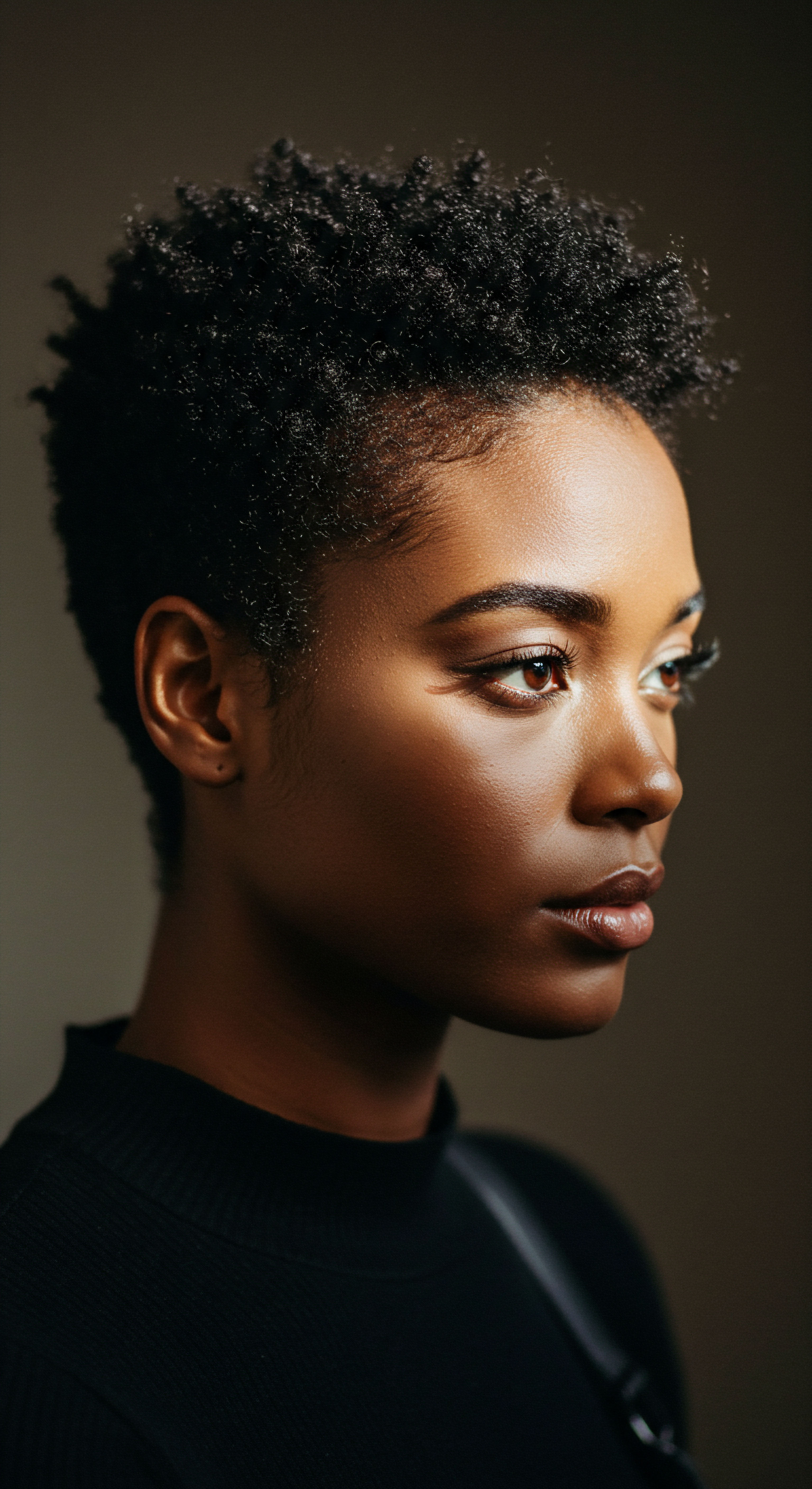
Microcirculation and Nutrient Delivery
The scalp is a highly vascular environment, relying on a robust network of tiny blood vessels, or Microcirculation, to deliver oxygen, nutrients, and hormones directly to the hair follicles. These vital supplies are essential for the energy-intensive process of hair growth. During periods of quality sleep, blood flow throughout the body, including the scalp, generally increases, supporting cellular repair and nourishment.
Conversely, sleep deprivation can compromise this crucial microcirculation. Reduced blood flow means a diminished supply of the very building blocks and fuel that hair follicles require to function optimally. This can lead to weaker hair strands, slower growth, and a compromised scalp environment less conducive to vibrant hair. A study examining microvascular reactivity during repetitive exposure to shortened sleep observed sex differences, with women showing a mild inflammatory response and men showing more vascular system sensitivity to repetitive sleep restriction.
While the study focused on broader microvascular changes, the implications for a highly vascularized area like the scalp are considerable. This suggests that the subtle, cumulative effects of insufficient rest on blood flow could quietly starve hair follicles of their needs, contributing to a gradual decline in scalp vitality.

Oxidative Stress and Premature Hair Aging
The concept of Oxidative Stress describes an imbalance between the production of reactive oxygen species (free radicals) and the body’s ability to neutralize them with antioxidants. Sleep plays a significant role in managing this balance. During sleep, the body actively repairs cellular damage and replenishes its antioxidant defenses.
Chronic sleep deprivation, however, leads to an increase in reactive oxygen species, tipping the scales towards oxidative stress. This imbalance can have direct detrimental effects on the scalp and hair. Oxidative stress is implicated in:
- Cellular Damage ❉ It can harm the lipids, proteins, and DNA within hair follicle cells, impairing their function and leading to inflammation.
- Scalp Conditions ❉ Oxidative stress is a key factor in the pathogenesis of inflammatory scalp conditions such as dandruff, seborrheic dermatitis, and psoriasis, which can further compromise hair health.
- Premature Graying ❉ Research indicates that oxidative stress plays a major role in the aging process of hair, specifically by impacting melanocytes, the cells responsible for hair pigmentation. A reduction in the activity of tyrosinase, a key enzyme in melanin production, can lead to a loss of hair color, resulting in premature graying.
- Compromised Hair Anchoring ❉ Oxidative stress can weaken the structural integrity of the hair follicle, reducing the anchoring force of the hair strand. This makes hair more prone to shedding, even if the hair cycle itself isn’t directly disrupted in the same way as with cortisol.
The accumulation of oxidative damage over time, exacerbated by inadequate sleep, can contribute to a subtle, yet persistent, decline in overall scalp and hair health, accelerating processes typically associated with aging.
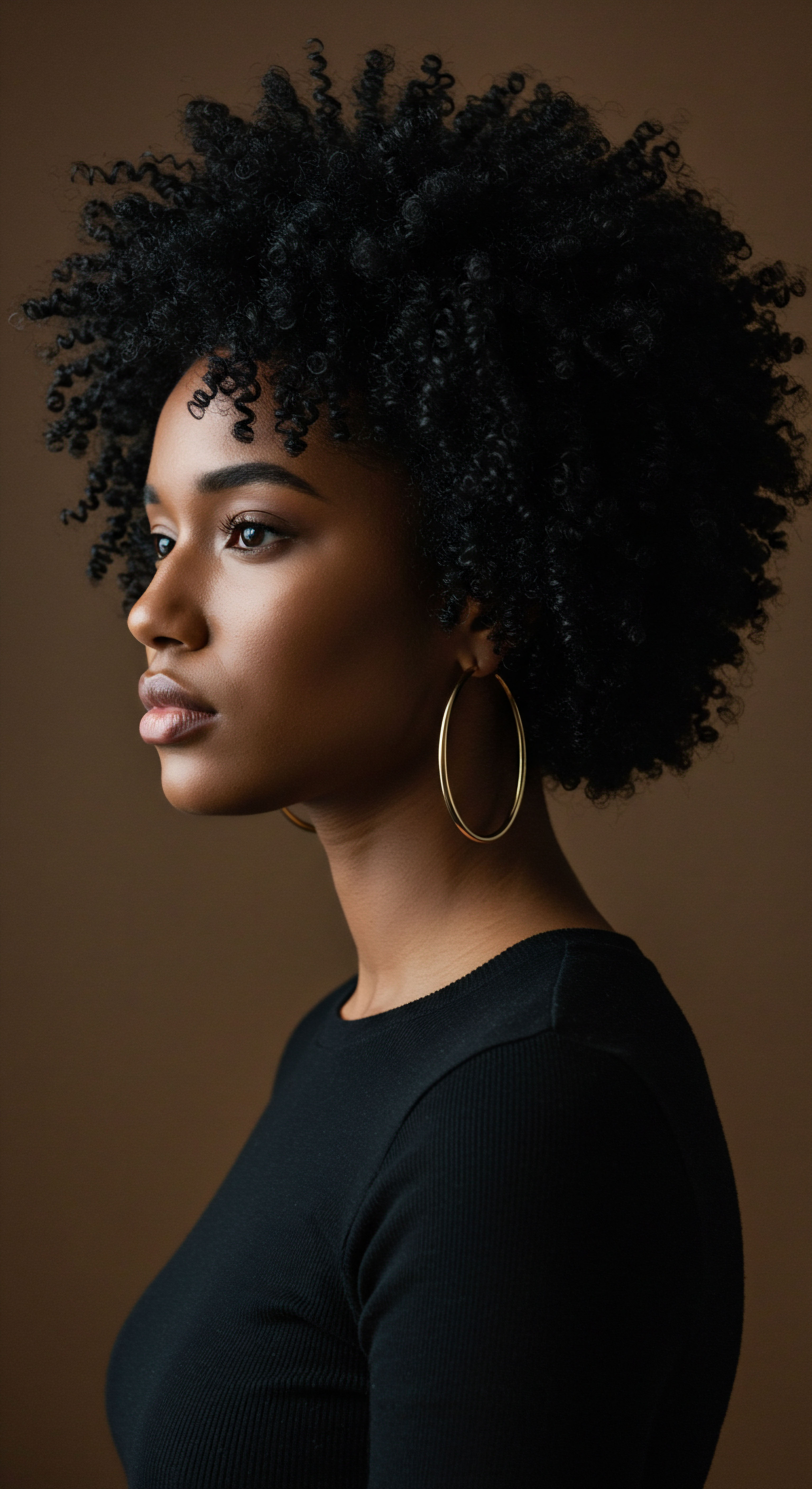
The Interplay of Circadian Rhythms and Hair Cycle Genes
Beyond the direct hormonal effects, a deeper scientific understanding reveals how sleep disruption impacts the very genetic expression within hair follicles. Hair follicles themselves possess their own set of “clock genes” (such as BMAL1 and PER1) that regulate their cyclical activity. These peripheral clocks are normally synchronized with the central circadian system. When the central rhythm is thrown off by sleep deprivation, it can desynchronize these localized clocks within the hair follicles.
Disruptions to these clock genes can lead to irregular hair cycling, potentially shortening the active growth phase (anagen) and prolonging the resting phase (telogen). This intricate molecular dance, when disrupted, means that even if the body has the raw materials for hair growth, the internal timing mechanisms that signal when and how to grow are compromised. This is a subtle, yet powerful, mechanism by which chronic sleep deprivation can gradually diminish hair density and overall scalp vitality.

Reflection
As we gently close the exploration of sleep’s profound influence on scalp vitality, a quiet truth settles ❉ the well-being of our hair, much like the deepest currents of our spirit, is inextricably linked to the rhythms of rest. We have seen how the subtle shifts in our hormonal landscape, prompted by the absence of restorative slumber, can ripple through the very cells that give life to our strands. From the energetic demands of hair follicle stem cells to the delicate balance of microcirculation and the pervasive whisper of oxidative stress, sleep emerges not as a mere luxury, but as a foundational pillar of scalp health.
Perhaps the true beauty of textured hair, in all its resilience and splendor, lies not only in its external care but also in the quiet, profound ritual of allowing the body to truly rest, to heal, and to restore its innate balance. This understanding beckons us to honor our need for deep sleep, recognizing it as a gentle, yet powerful, act of self-care for our hair and our whole selves.

References
- Clinikally. (2024, July 16). Impact of Sleep Deprivation on Hair Health.
- Centre Clauderer. Hair and sleep ❉ the importance of the night for hair health.
- Hair Doctors. (2025, April 2). Can Lack of Sleep Make You Lose Hair? Uncovering the Connection.
- MONPURE. (2024, March 15). Hair Loss ❉ Is Lack of Sleep Stunting Growth?
- DiStefano Hair Restoration Center. (2025, March 7). Does Sleep Affect Hair Health?
- HairFree & HairGrow. (2023, October 27). Sleep and Hair Loss. Relationship Explained.
- Typology. (2024, March 6). The consequences of a lack of sleep on your hair.
- Mad Viking. (2024, May 21). How Sleep Deprivation Can Affect Your Hair Health.
- Xu, Y. Yu, X. & Li, C. (2023). Melatonin’s Role in Hair Follicle Growth and Development ❉ A Cashmere Goat Perspective.
- HHC Clinics. Sleep and Hair Growth – What’s the Connection?
- Wimpole Clinic. Can Lack of Sleep Cause Hair Loss? The Science Explained.
- Harklinikken. How Oxidative Stress Affects The Scalp and Hair.
- MONPURE. (2020, June 6). Why Sleep Is So Important For Your Scalp.
- LearnSkin. (2017, November 5). How Does the Circadian Rhythm Affect Hair Growth?
- Xerfan, M. et al. (2021). The exposome impact on hair health ❉ etiology, pathogenesis and clinical features – Part I.
- Mattress Depot USA. (2021, November 24). The Effects of Sleep Deprivation on Hair Health.
- Plikus, E. V. et al. (2017). Clock genes, hair growth and aging. Aging-US.
- hairlove. (2024, February 16). Hormones & Hair Loss | How to Balance Hormones Naturally.
- Yang, L. et al. (2023, January 26). Hair Follicles as a Critical Model for Monitoring the Circadian Clock. PMC – PubMed Central.
- La Bonne Brosse. (2025, April 25). Lack of Sleep ❉ What Impact on Hair Health?
- Northway Clinic. Examining the Relationship between Stress and Hair Loss.
- Punh ❉ Nutrition. (2024, July 31). Can Hormones Cause Hair Loss?
- Dallas Associates of Uptown. (2024, February 29). The Transformative Power of Sleep for Healthy Skin.
- Wimpole Clinic. Which Hormones Cause Hair Loss In Women?
- Happy Head. (2024, October 2). Does Lack of Sleep Cause Hair Loss? The Science Explained.
- Heloa. (2025, May 21). Sex hormones function ❉ understand effects & nurture your child’s growth.
- honesthairrestoration. The Link Between Stress and Hair Loss.
- My Hair Doctor. MALE PATTERN BALDNESS.
- Health. (2023, August 8). Is Stress Responsible For Telogen Effluvium? Here’s What You Need To Know.
- Pathkind Labs. (2023, October 18). Understanding and Managing ❉ The Stress-Hair Loss Connection.
- Vgontzas, A. N. et al. (2007). Macro- and microvascular reactivity during repetitive exposure to shortened sleep ❉ sex differences. PubMed Central.
- Signature Dermatology. (2024, August 16). The Impact of Sleep on Skin Health.
- Trueb, R. M. (2013). Integrative and Mechanistic Approach to the Hair Growth Cycle and Hair Loss. PMC.
- WebMD. (2023, September 25). Thyroid Problems May Be Disrupting Your Sleep.
- Paloma Health. (2024, August 22). How Hypothyroidism Affects Your Hair, Skin, and Nails.
- monpure. (2022, February 19). The Impact of Oxidative Stress on Scalp and Hair Health.